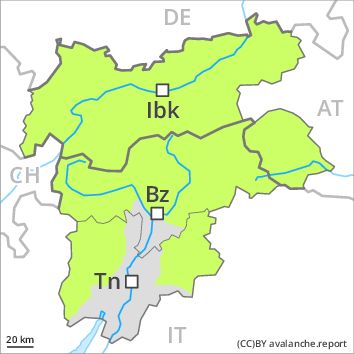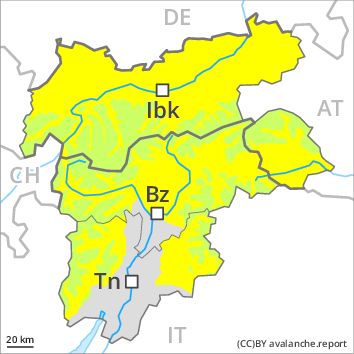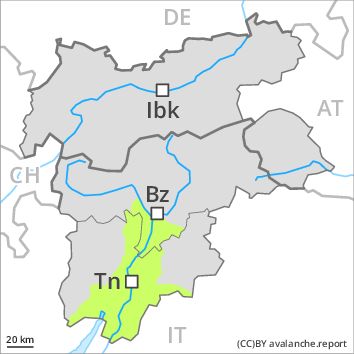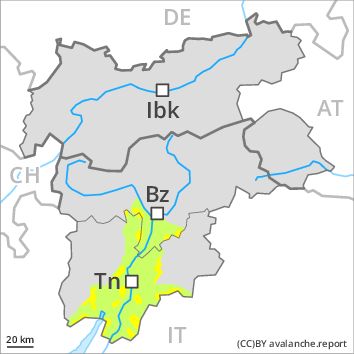Regions
Sexten Dolomites, Latemar, Southern Adamello, Adamello - Presanella, Northern Brenta - Peller, Southern Brenta, Southern Lagorai, Northern Lagorai, Allgäu Alps, Eastern Lechtal Alps - Ammergau Alps, Mieming Mountains, Karwendel Mountains, Brandenberg Alps, Wilder Kaiser Mountains - Waidring Alps, Western Lechtal Alps, Central Lechtal Alps, Grieskogel Mountains, Val Müstair Alps, Western Verwall Mountains, Langtaufers, Eastern Verwall Mountains, Schnals Ridge, Silvretta, Southern Stubai Alps, Samnaun Mountains, Southern Zillertal Alps and High Tauern, Northern Oetz and Stubai Alps, Saldurn-Mastaun Ridge, Western Tuxer Alps, Texel Mountains, Eastern Tuxer Alps, Sarntal Alps, Western Kitzbühel Alps, Western Pfunderer Mountains, Eastern Kitzbühel Alps, Glockturm Range, Maddalene, Eastern Pfunderer Mountains, Durreck Range, Weißkugel Range, Western Rieserferner Mountains, Gurgler Range, Western Deferegger Alps, Central Stubai Alps, Ortler Range, Northern Zillertal Alps, Ulten Valley, Venediger Range, Eastern Rieserferner Mountains, Glockner Range, Gröden Dolomites, Primiero - Pale di S. Martino, Eastern Deferegger Alps, Prags Dolomites, Schober Mountains, Lienzer Dolomites, Fassa Valley, Sole, Pejo and Rabbi
AM
Danger level
PM
Danger level
Avalanche Problem
Wet snow above 2800m, NE-E-SE-S-SW-W-NW
Gliding snow above 2600m, NE-E-SE-S-SW-W-NW
The danger of wet and gliding avalanches will increase during the day.
The Avalanche Warning Service currently has only a small amount of information that has been collected in the field.
The surface of the snowpack will freeze to form a strong crust and will soften during the day. Wet and gliding avalanches are the main danger. The avalanche prone locations are to be found in particular on steep northeast to south to northwest facing slopes below approximately 2800 m and on steep north facing slopes below approximately 2400 m. The avalanches can release the wet old snow as well and reach large size in isolated cases.
In addition a low (level 1) danger of dry slab avalanches exists. This applies in particular on extremely steep shady slopes above approximately 2500 m. The avalanches are rather small and can mostly only be released by large loads.
Snowpack
dp 10: springtime scenario
dp 2: gliding snow
Outgoing longwave radiation during the night will be good. As a consequence of a sometimes strong northwesterly wind, mostly small wind slabs formed. Individual weak layers exist deep in the old snowpack on shady slopes, especially above approximately 2400 m in areas where the snow cover is rather shallow. At low altitude no snow is lying.
Tendency
Increase in avalanche danger as a consequence of warming during the day and solar radiation.

